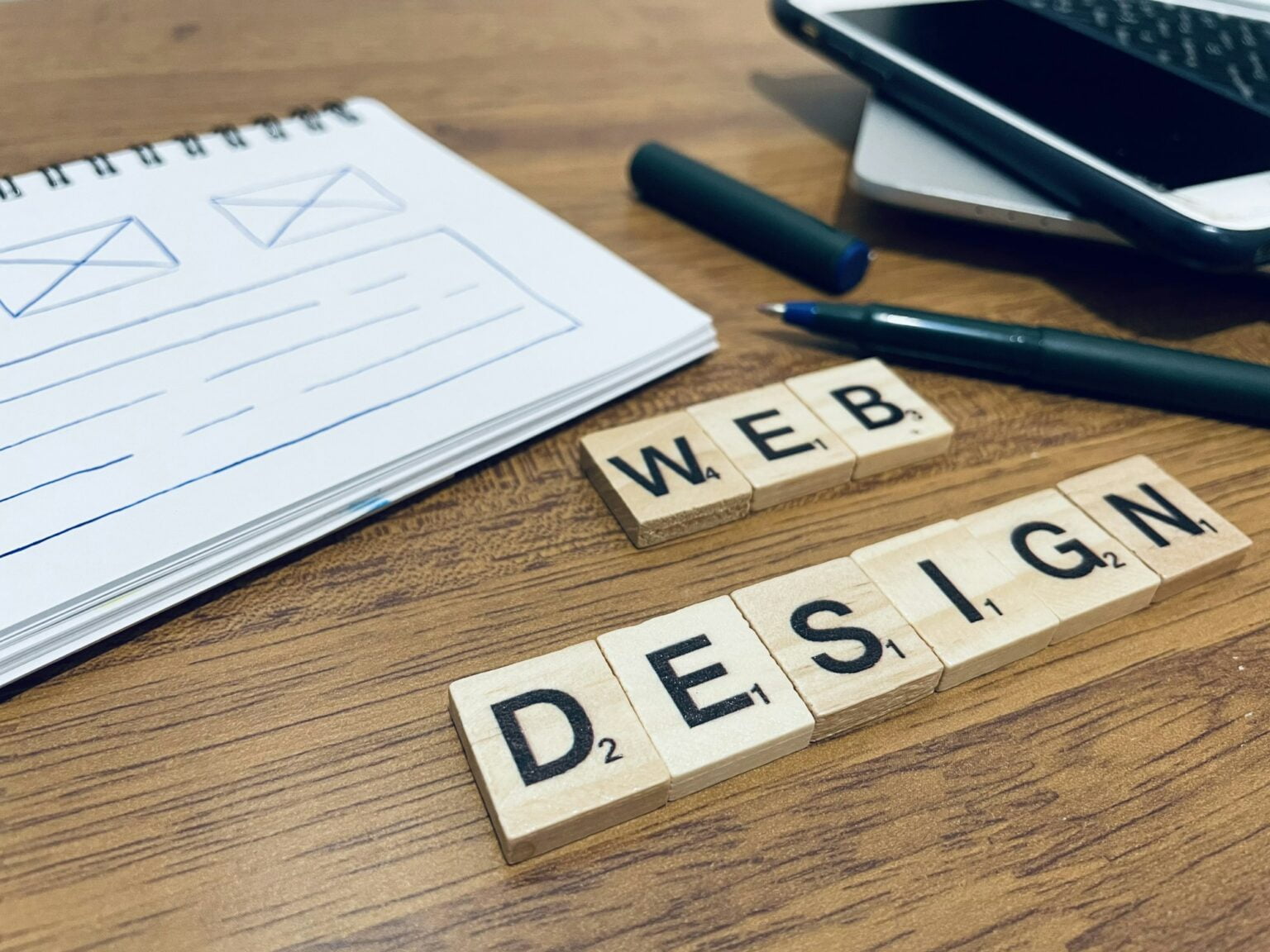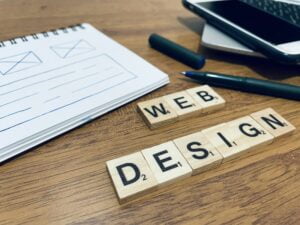Inhaltsverzeichnis
Introduction
In today’s digital world, effective web design is crucial to the success of a website. Usability, responsive design, navigation and accessibility are just some of the key factors that influence the user experience. This article covers the basic principles of modern web design that are crucial to creating an engaging and functional online presence. The aim is to highlight all aspects that are important for creating a user-friendly website.
1. the importance of user-friendliness
1.1 Definition of user-friendliness
Usability refers to the ease with which users can navigate a website and find the information they are looking for. A user-friendly website is intuitive, clearly structured and allows for smooth interaction. This is often achieved through various design elements, layouts and features that work together to enhance the user experience.
A high user experience lowers the learning curve for new users and increases the likelihood that visitors will stay on the site and become potential customers. The focus should be on understanding the needs and expectations of users to create an effective design.
1.2 Influence on the user experience
User experience (UX) is the overall impression a user has of a website while visiting it. Usability is a key component of UX as it directly influences how visitors interact with the website. A positive user experience leads to higher satisfaction and promotes customer loyalty.
Studies show that users who have a pleasant experience are more likely to return and recommend the website to others. Conversely, difficulties with navigation or long loading times can lead to visitors becoming frustrated and quickly leaving the site.
1.3 Business benefits of a user-friendly website
User-friendliness not only has an impact on the user experience, but also on business results. Websites that are designed to be user-friendly often have higher conversion rates as they encourage visitors to buy products or use services. Companies that invest in UX can expect a significant return on investment in the form of increased sales and customer satisfaction.
In addition, a user-friendly website improves SEO rankings. Search engines such as Google rate user experience as an important factor, which is why websites that are difficult to navigate can suffer losses in visibility.
2. responsive web design
2.1 What is responsive web design?
Responsive web design is an approach that ensures that a website looks and functions optimally on different devices. This means that regardless of whether a user is using a smartphone, tablet or desktop computer, the website automatically adapts to the screen size and resolution.
The trend towards mobile-friendly designs is unmistakable as more and more people use mobile devices to access the internet. A responsive design not only improves the user experience, but is also crucial for search engine optimization.
2.2 Techniques for responsive design
The main techniques of responsive design include flexible layouts, images and CSS grid systems. Flexible layouts use relative units such as percentages instead of fixed units such as pixels to ensure that elements adapt proportionally to the screen size.
The use of flexible images means that images are scaled so that they do not outgrow their containers. CSS Grid and Flexbox enable a dynamic arrangement of content, which further facilitates the implementation of responsive designs.
2.3 The role of media queries
Media queries are an essential tool in responsive web design. They allow developers to define different CSS rules for different screen sizes and resolutions. Media queries can be used to apply specific styles that adapt to the characteristics of the device, resulting in a customized user experience.
Implementing media queries is a best practice to ensure that the website looks good and remains user-friendly on all devices, regardless of the different technical specifications.
3. consistency in design
3.1 Color palette and typography
Consistency in color palettes and typography is crucial for a unified web design. A consistently chosen color palette creates a visual experience that supports the brand and builds trust with users. Different colors should be chosen so that they are both aesthetically pleasing and create a clear hierarchy of information.
Typography also plays a major role. Using fewer fonts that work well together contributes to clarity and readability. A consistent font size and style promotes usability and ensures that users can focus on the content without being distracted by different fonts.
3.2 Design elements and layouts
Consistent design elements such as buttons, icons and navigation menus are also important. These elements should be uniform in size, color and style so that users can quickly recognize how to interact with the website. A consistent layout helps users find their way around the site more quickly and reduces cognitive load.
The layout should be designed in such a way that the most important information and functions stand out, while less important elements do not distract the user. A well-structured layout supports the information architecture and user guidance.
3.3 The importance of recognition
Recognition is a psychological principle that states that people remember familiar elements more easily. A consistent design helps users to quickly become accustomed to the structure and functions of the website. This recognition leads to greater trust in the brand and increases the likelihood that users will visit the website again.
To promote recognition, each design element should be clearly defined and used consistently in different contexts. This has a positive effect on both branding and the user experience.
4 Navigation and user guidance
4.1 Principles of clear navigation
Clear and intuitive navigation is of the utmost importance for a user-friendly website. The main navigation bars should be clearly visible and easy to understand. Users should be able to find their way around the website with minimal effort.
A hierarchical navigation system that clearly displays the most important categories and subcategories improves user guidance. It is important that the terms and labels in the navigation are generally understandable and directly reflect the content that users expect.
4.2 The role of breadcrumbs
Breadcrumbs are another useful navigation tool that shows users where they are within the website. They support user navigation by allowing users to quickly return to previous pages and help them understand the structure of the website.
Breadcrumbs contribute to the user experience by providing additional contextual information and making it easier to navigate complex websites. They are particularly helpful in e-commerce websites or extensive information portals.
4.3 Search functions and their significance
The implementation of an effective search function is essential for websites with extensive content. A clearly visible and functional search bar allows users to quickly find the information they are looking for without having to navigate through numerous pages.
Search functions should be equipped with intelligent algorithms that make suggestions and further improve the user experience. A simple and efficient search is a powerful tool to increase user satisfaction.
5. accessibility in web design
5.1 What does accessibility mean?
Accessibility in web design means that digital content is accessible to all users, including people with disabilities. It is important to design websites so that they can be used by people with different abilities, including the visually impaired, hearing impaired and people with motor impairments.
Creating an accessible website is not only a legal requirement, but also an ethical responsibility to ensure that no one is excluded from the benefits of the internet.
5.2 Guidelines for ensuring accessibility
The Web Content Accessibility Guidelines (WCAG) provide a framework for creating accessible content. These guidelines include principles such as perceptibility, usability, comprehensibility and robustness. Websites should meet these criteria to ensure that their content is accessible to all users.
Specific measures include the use of alternative text for images, the correct structuring of HTML content and the provision of subtitles for videos. These steps help to improve accessibility and optimize the user experience for all.
5.3 Technical aids for support
Technological aids such as screen readers and keyboard navigation are crucial for accessibility. Screen readers allow visually impaired users to read the text on a website aloud, while keyboard navigation allows users to navigate the website without a mouse.
When designing, it is important to take these technologies into account and ensure that the website is compatible with them. This not only promotes accessibility, but also improves the overall user experience.
6 Content and readability
6.1 The importance of high-quality content
High-quality content is the heart of every website. It should be informative, relevant and engaging to keep users interested. Poor content can devalue even the best design and cause users to leave the website.
It is important to update content regularly and ensure that it meets the needs of the target audience. The combination of well-researched information and appealing presentation ensures a positive user experience.
6.2 Fonts and text sizes
Choosing the right fonts and text sizes is crucial for readability. Fonts should be clear and easy to read, with serif and sans-serif fonts serving different purposes. A good balance between font size and line height significantly improves readability.
It is advisable to design headings and body text in different sizes to create a clear hierarchy. This makes it easier for users to scan the content and find the information they are looking for.
6.3 Use of visual elements
Visual elements such as images, graphics and videos help to break up the text and make the content more appealing. However, they should be used sensibly to promote understanding and not be a distraction. The use of infographics can effectively summarize complex information and make it easier to understand.
The right balance between text and visual content is crucial for user engagement. Well-placed visual elements increase the chance that visitors will stay on the page longer.
7. performance and loading times
7.1 Influence of loading times on the user experience
The loading time of a website has a direct influence on the user experience. Studies show that users will abandon a website if they have to wait longer than three seconds for it to load. Long loading times can cause frustration and reduce the likelihood of visitors returning.
Optimized performance not only improves the user experience, but also contributes to search engine optimization. Search engines prefer websites with fast loading times and reward them with better rankings.
7.2 Techniques for optimizing loading times
There are several techniques for optimizing load times, including minimizing HTTP requests, using browser caching, and optimizing code. Reduce the number of external resources used when loading the page to increase loading speed.
The implementation of Content Delivery Networks (CDNs) can also be helpful. CDNs store copies of your website in different locations around the world so that users can access the data that is stored closer to their location more quickly.
7.3 The importance of image compression
Image compression is a decisive factor for the loading time. Uncompressed images can significantly affect the loading speed. You can reduce loading times by using suitable formats and optimizing image sizes.
There are numerous image compression tools that help to reduce the file size without significant loss of image quality. These optimization measures help to improve the overall performance of the website and enhance the user experience.
8. conclusion
Modern web design requires a strong understanding of usability, responsive design, consistency, navigation, accessibility and performance. Implementing these principles is crucial to creating a website that is both engaging and functional.
A user-friendly design promotes user satisfaction, increases conversion rates and ensures that the website also ranks well in search engines. By paying attention to these basics, companies and designers can ensure that their online presence meets today’s requirements.
FAQs
What is user-friendly web design?
User-friendly web design refers to the design of websites that are intuitive and easy to navigate to ensure a positive user experience.
Why is responsive design important?
Responsive design is important because it ensures that a website looks and functions optimally on different devices and screen sizes, improving accessibility and user experience.
How can I improve the loading times of my website?
You can improve the loading times of your website by minimizing the number of HTTP requests, compressing images, using browser caching and implementing a content delivery network.
What are the most important aspects of accessibility?
The most important aspects of accessibility include the use of alternative text for images, compliance with WCAG guidelines and the implementation of technologies that support people with disabilities.








